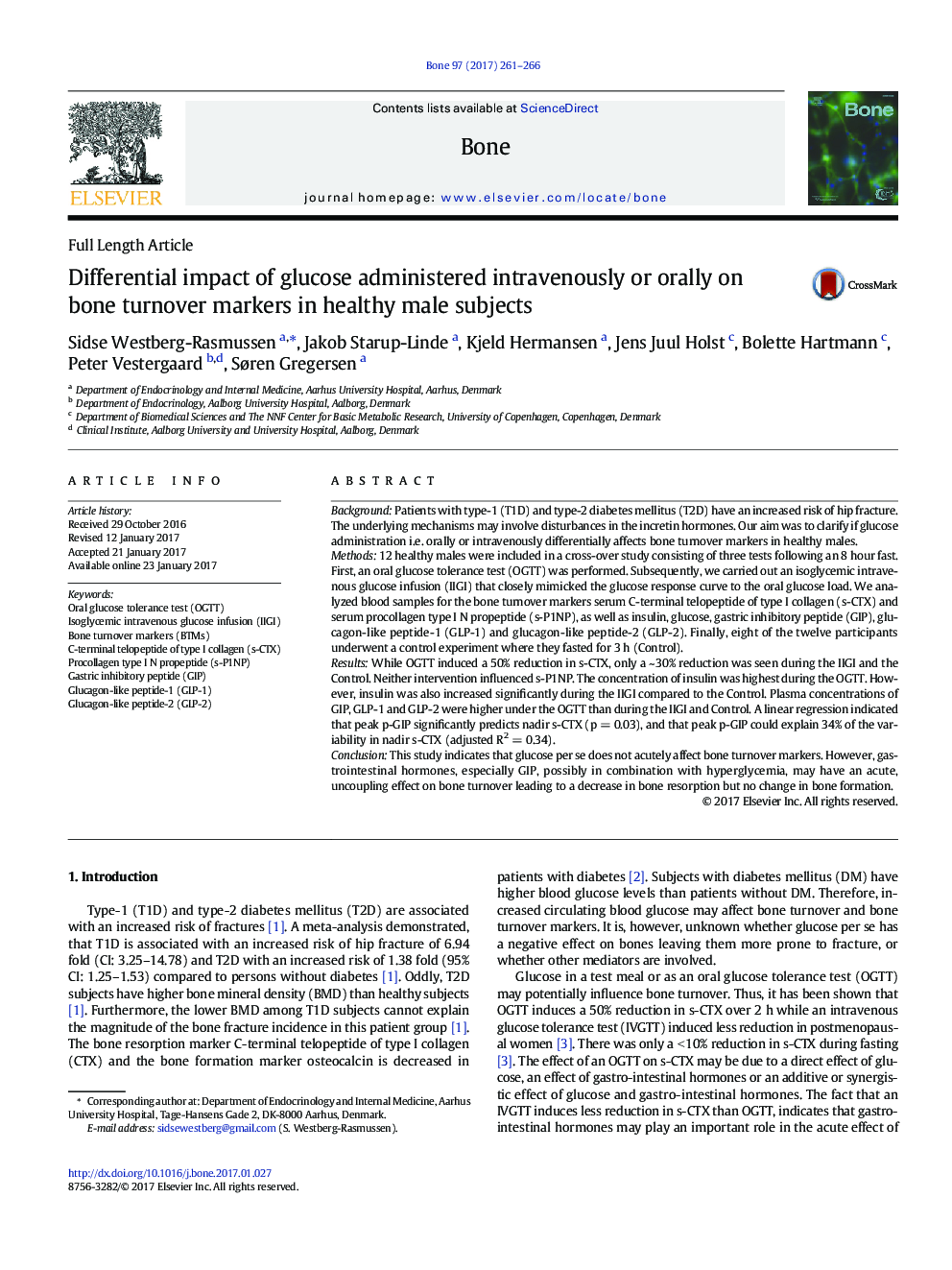| کد مقاله | کد نشریه | سال انتشار | مقاله انگلیسی | نسخه تمام متن |
|---|---|---|---|---|
| 5585430 | 1568122 | 2017 | 6 صفحه PDF | دانلود رایگان |
- Oral glucose tolerance test and isoglycemic intravenous glucose infusion were performed
- No difference was observed between the blood glucose curves during the interventions
- OGTT induced a 50% reduction in the bone resorption marker s-CTX
- A ~Â 30 % reduction was seen during IIGI and control
- Gastrointestinal hormones may acutely affect bone turnover markers
BackgroundPatients with type-1 (T1D) and type-2 diabetes mellitus (T2D) have an increased risk of hip fracture. The underlying mechanisms may involve disturbances in the incretin hormones. Our aim was to clarify if glucose administration i.e. orally or intravenously differentially affects bone turnover markers in healthy males.Methods12 healthy males were included in a cross-over study consisting of three tests following an 8 hour fast. First, an oral glucose tolerance test (OGTT) was performed. Subsequently, we carried out an isoglycemic intravenous glucose infusion (IIGI) that closely mimicked the glucose response curve to the oral glucose load. We analyzed blood samples for the bone turnover markers serum C-terminal telopeptide of type I collagen (s-CTX) and serum procollagen type I N propeptide (s-P1NP), as well as insulin, glucose, gastric inhibitory peptide (GIP), glucagon-like peptide-1 (GLP-1) and glucagon-like peptide-2 (GLP-2). Finally, eight of the twelve participants underwent a control experiment where they fasted for 3 h (Control).ResultsWhile OGTT induced a 50% reduction in s-CTX, only a ~ 30% reduction was seen during the IIGI and the Control. Neither intervention influenced s-P1NP. The concentration of insulin was highest during the OGTT. However, insulin was also increased significantly during the IIGI compared to the Control. Plasma concentrations of GIP, GLP-1 and GLP-2 were higher under the OGTT than during the IIGI and Control. A linear regression indicated that peak p-GIP significantly predicts nadir s-CTX (p = 0.03), and that peak p-GIP could explain 34% of the variability in nadir s-CTX (adjusted R2 = 0.34).ConclusionThis study indicates that glucose per se does not acutely affect bone turnover markers. However, gastrointestinal hormones, especially GIP, possibly in combination with hyperglycemia, may have an acute, uncoupling effect on bone turnover leading to a decrease in bone resorption but no change in bone formation.
Journal: Bone - Volume 97, April 2017, Pages 261-266
